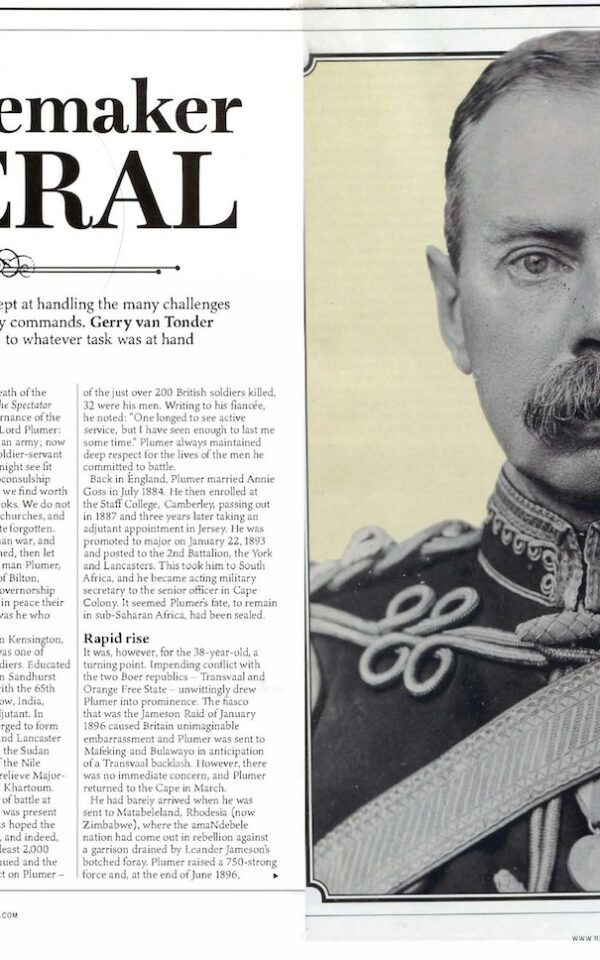From 1941 to 1980, ‘C’ (Rhodesia) Squadron was an integral and highly esteemed member of the Special Air Service (SAS) family. Inspired by the rapid Long Range Desert Group’s (LRDG) vehicle-borne rescue of elements of the SAS, whose first mission into German-held territory ended in failure as a result of severe sandstorms, No. 8 (Guards) Commando officer David Sterling developed the extremely successful SAS operational tactic that centred on small, heavily armed and mobile strike units.
Designated B Squadron, Rhodesians from the Argylls, the Buffs, the Sherwood Foresters and Durham Light Infantry formed ‘S’ Patrol. A second patrol, ‘S2’ soon followed, the strength of each patrol being an officer and 15-18 other ranks. Each vehicle sported a Rhodesian place name on the side, for example S.1 Salisbury and S.10. Sabi. T he Canadian Military Pattern (CMP) Ford 30-cwt F30 of the patrols had to be specially adapted to cope with the very hot and sandy Western Desert conditions. Radiators were fitted with condensers and extra leaves added to spring suspensions. Doors, windscreens and hoods were removed, while mounts and fittings for guns, jerry cans, water containers, sand-channels and a radio were added. When fully loaded at the commencement of a mission, each truck carried almost two tons of water and provisions for three or four men for three weeks, and sufficient fuel for 1,100 miles.
From July 1942, Willys jeeps began to be issued. These were generally fitted with a twin- and two single-mounted Vickers K .303 machine guns. With the defeat of Field Marshall Rommel’s Afrika Korps, both the LRDG and SAS commenced operations in the Mediterranean as part of the liberation of Greece and Italy from German forces: the former in the Dodecanese and the latter, 3rd Squadron, 2nd SAS Regiment, in Italy.
In 1950, as Communist Chinese insurgents in Malaya sought to seize control, around 120 suitable candidates were selected as the Southern Rhodesia Far East Volunteer Unit (SRFEVU), redesignated ‘C’ Squadron on arrival in Malaya. the unit was also equipped with Humber Scout cars for road patrols. The armoured vehicle was armed with a Bren light machine gun (LMG) with a 50- or 100-round drum magazine, and a searchlight calibrated to 300 yards. After Malaya and service in Aden, the squadron was disbanded, only to be resurrected in April 1961.
First introduced into the SAS in 1955, the squadron received Series I Land Rovers called Sabres. These came with a 2-litre petrol engine, four-wheel drive and an 88-inch wheelbase. Forward-mounted twin .303 Bren guns provided the main firepower. There was a searchlight above the driver’s head. The Rhodesian Sabres were also fitted with smoke- grenade launchers in front of the radiator grill.
Following Rhodesia’s unilateral declaration of independence from Britain in November 1965, during the country’s counter-insurgency war of the 1970s the Sabres, the squadron increasingly made us of heavily armed and mine-protected Sabres to launch clandestine cross-border raids into neighbouring countries to neutralise guerilla bases.






Reviews
There are no reviews yet.